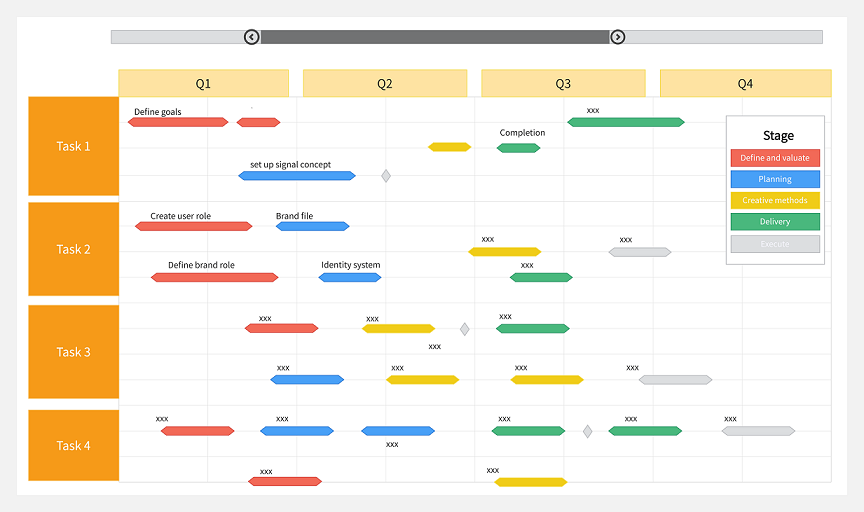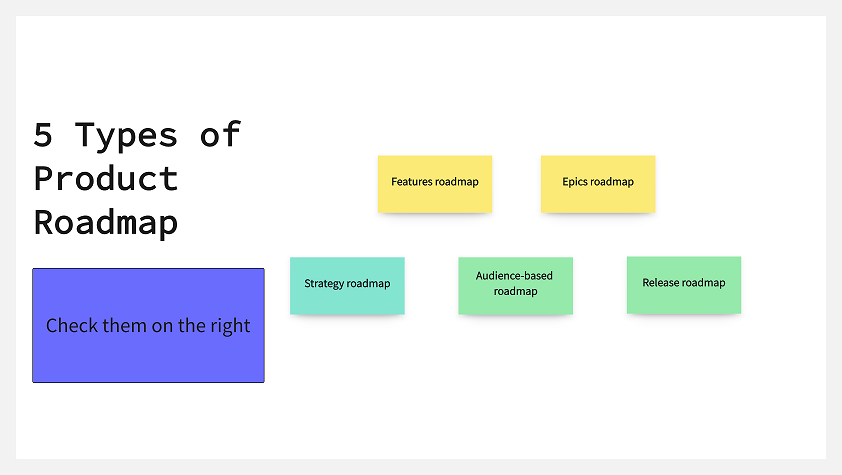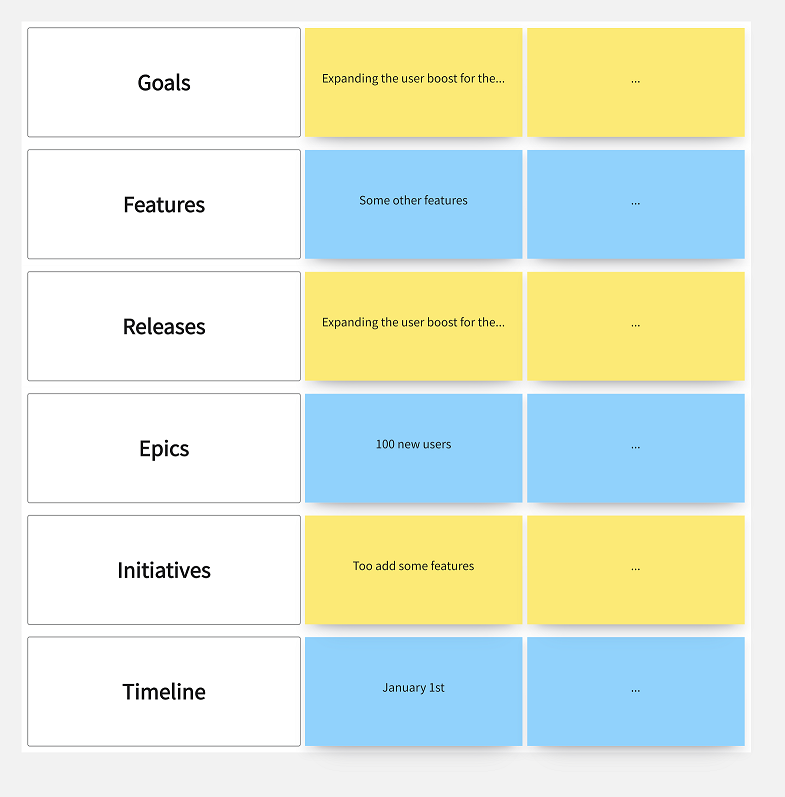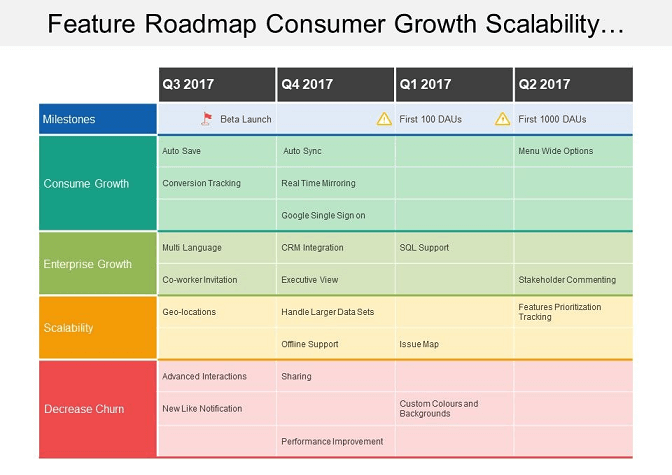As a product manager, it is essential to have a system where you can communicate your product vision and lead your team toward achieving those goals. Product building can be a long and sophisticated process—especially without a proper plan and a lack of visual overview to know whether the team is heading in the right direction or not.
Hence, a product roadmap comes to the rescue for product managers for steering the team toward work that is productive (no pun intended) and takes them closer to achieving those product-oriented goals.
In this blog, we will learn more about the product roadmap, its importance, its types, and how to create one.

Part 1. What Is a Product Roadmap?
1.1 How do you define a product roadmap?
Essentially, a product roadmap is a strategic tool that maps out the product vision and direction of your product over time. It communicates to your product team and stakeholders the deliverables and clear expectations of where the product is heading. In a nutshell, a product roadmap is utilized as a plan for executing product strategies and tracking the progress of the journey.

Source: Altexsoft
Who else can use them apart from product managers?
- Executives
- Product engineers
- Marketing team
- Sales team
- Customer support team
- Customers or prospects
- Other stakeholders involved
1.2 Types of product roadmaps
After learning its definition, let us go through different types of product roadmaps utilized by product teams:
- Features roadmap: This type of roadmap will focus on its features rather than other aspects. This roadmap illustrates when the new features will be delivered as a communication tool to inform the customers and other cross-functional teams.
- Epics roadmap: This type of roadmap is crucial when it comes to deciding on priorities by focusing on key areas and delivering work across multiple releases. As a result, the epics roadmap allows you to group related features all together for better organization.
- Strategy roadmap: A strategy roadmap helps in displaying the high-level plans required to achieve product goals. It indicates progress to teams and keeps them well-aligned to comply with business strategies.
- Audience-based roadmap: This type of roadmap differs based on who will see and use them. For example, when engineers view the roadmap—it should display much more technical details compared to when an executive sees the roadmap. In a nutshell, this type of roadmap has components tailor-made to a specific audience.
- Release roadmap: A release roadmap communicates all the activities that is required before the product is released to the market. Hence, it displays what needs to be done and coordinates release activities with other divisions in your organization such as your sales, marketing, and technical teams.

1.3 What should a product roadmap include?
Now, let us go through what exactly a product roadmap should include. Here are the key components that must be included:
- Goals: Implement SMART (Specific, Measurable, Attainable, Relevant, Time-bound) goals in your product roadmap to help you deliver the product.
- Features: A feature is a piece of functionality that provides value to your users. This can mean how it functions, its appearance, and its performance lifetime value.
- Releases: It displays the launch of the new product in a timeline. Releases contain multiple features that need to get delivered before it is released to the market.
- Epics: These are large categories of work that are stretched over multiple releases.
- Initiatives: It shows specific features and releases that relate to your strategy. Thus, it indicates how your team’s efforts will impact the goals you have set.
- Timeline: Last but not least, there needs to be a specific timeline in order for the team to visualize the product release. This can depend on months and probably a year depending on the nature of the product and project.

Part 2. Why Is a Product Roadmap Important?
Why do product managers use roadmaps? How effective is one? Here is why product roadmaps are integral to the early stages of product development and determining its success upon release:
It provides visibility to every stakeholder involved
A well-defined product roadmap provides executives, cross-functional teams, and every other stakeholder involved with a clear overview of what’s going on and what will be achieved. As a result, it ensures stakeholders buy into the project and feel good about the progress.
It boosts effective collaboration among cross-functional teams
When done properly, a great product roadmap highlights what needs to be prioritized and communicates every detail between different teams in the organization. As a result, all cross-functional teams can focus on utilizing their scarce resources on productive initiatives rather than suffering from wasted resources and ineffective collaboration.
It serves as a backbone to the product and business strategy
The product roadmap communicates product strategy across your cross-functional teams. As a result, the organization aligns the product strategy with business goals and accomplishes the project together.
The product roadmap illustrates high-level tactical and strategic decisions which affect the long-term success of the organization. Eventually, it creates an organizational culture where everyone has a good understanding of where they’re heading with product development.
Part 3. How to Easily Build Up a Product Roadmap
Building a product roadmap is simple. All you need is a tool that can help you organize one. For that, Boardmix is a free online tool that helps product managers to create product roadmaps for their projects.
Some of the features of Boardmix include:
- It is free to use for individual users.
- It operates online so there is no need to download any app for it.
- Because it is an online tool, any changes you make will be automatically saved.
- You can get free product roadmap templates which are available in the Boardmix community.
- You can include any element to your canvas—making your product roadmap to look interesting and clean.
- You can export your files as .png, .jpg, .pdf, .svg, and .bdx (Boardmix format) files.
Follow these simple steps to create your product roadmap today:
Step 1 - Define the product strategy
First and foremost, you will need to set your product goals and strategies during the initial stages of product development. This includes defining your product vision by putting forward the research insights you have regarding who your target market is, what they need, what their pain points are, and how your product will bridge the gap and take them closer to fulfilling their goals.
Step 2 - Manage priorities
As you know, most product teams will have a flurry of product ideas coming in, so it is crucial to have them organized and know what needs to prioritize. It seems like more of an agile approach but it works and this would be the second step in what you need to put in your product roadmap.
Step 3 - Define the features and requirements
The next step is to determine all the product features that you want to provide to your customers. Make it specific. Include the essential details as your requirements and organize larger groups into epics. As a result, this will help you communicate the product’s benefits to your team and stakeholders.
Step 4 - Determine the timeline
So far, you have established your goals and necessary requirements to deliver the product features. Now, you will need to decide when to get them all sorted for the product release. This is where you organize each delivery timeline within specific releases.
Step 5 - Select your roadmap view
Last but not least, set up your roadmap template on how you want your specific audience to visualize everything that you have planned. It can differ based on how your executives, engineers, marketing, and sales teams want to view it. Hence, it is important to have software that lets you generate roadmap templates that cater to your audience.

Create Product Roadmaps for Making a Successful Product…
As you have learned in this guide, a product roadmap helps to organize all the thoughts, ideas, and product strategies into one place and communicate everything to others.
Our brain is the hub for generating game-changing ideas but not the best place to store them. Hence, it is more convenient to have a tool that helps you create those roadmaps and successfully communicate your ideas to the team.
Boardmix helps in making life easy for product managers out there. Don’t look further and start using Boardmix today to create your successful roadmap.









